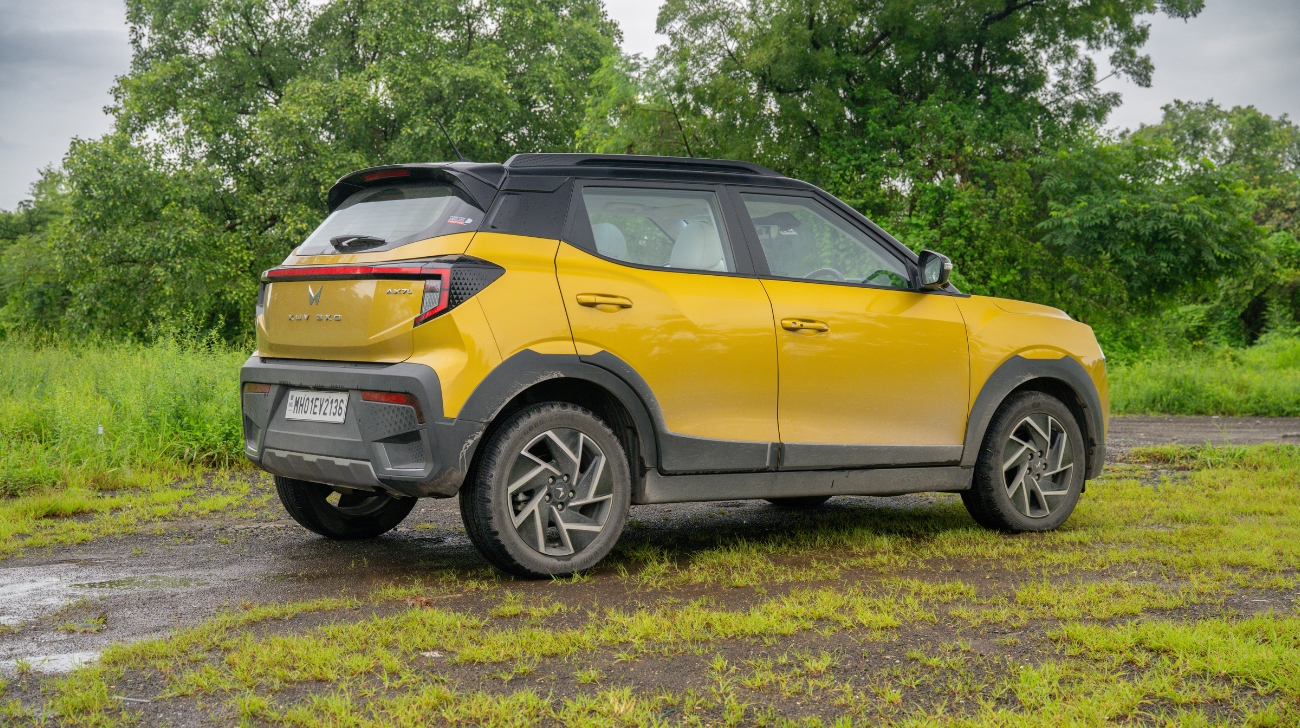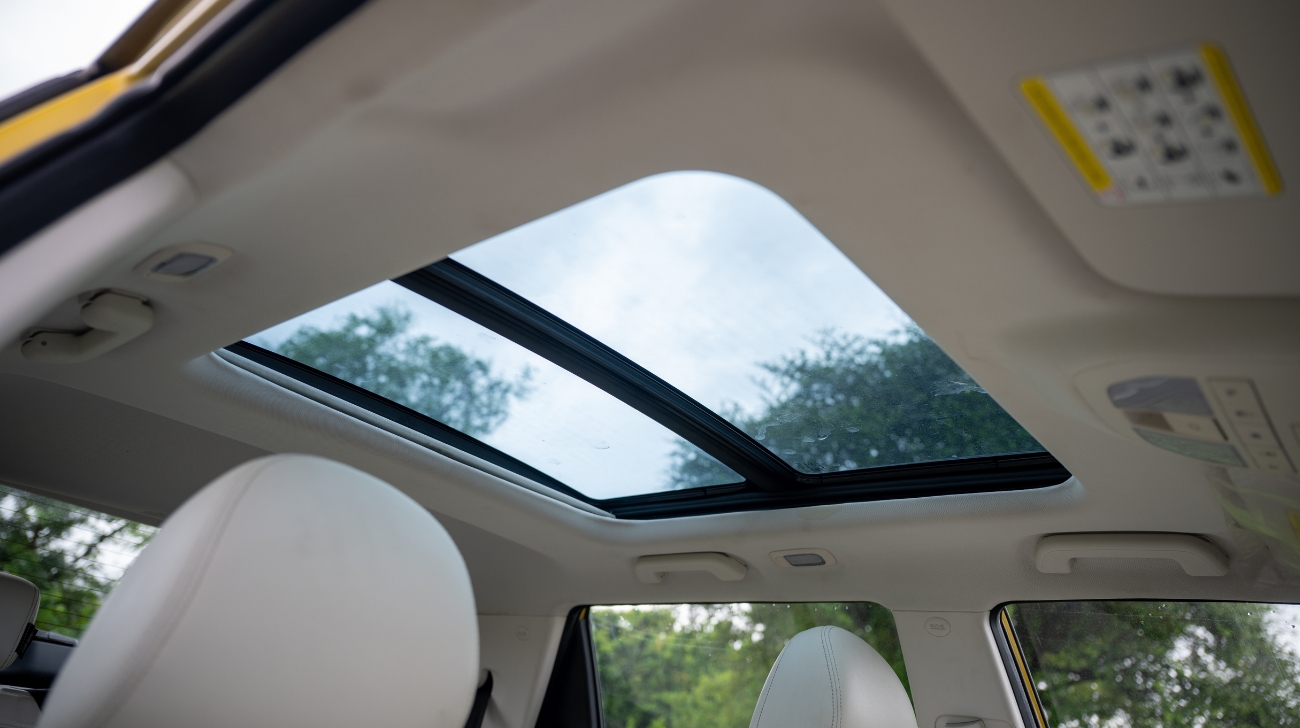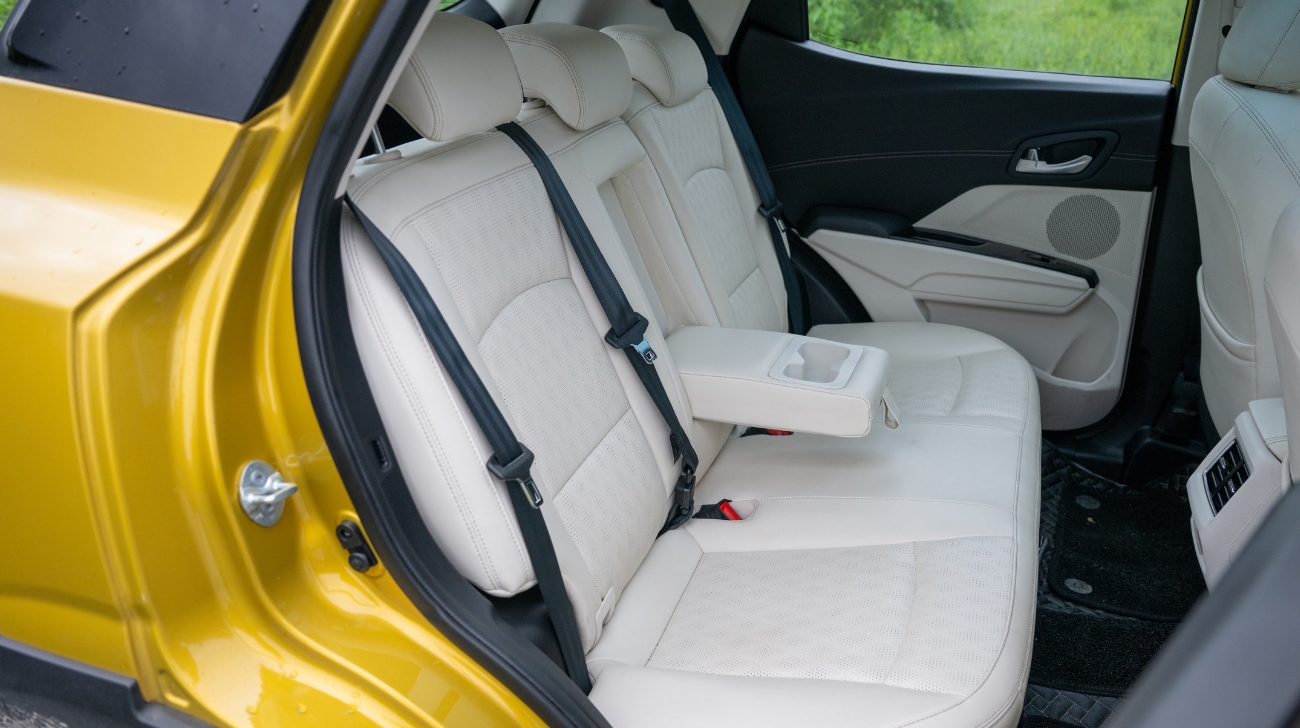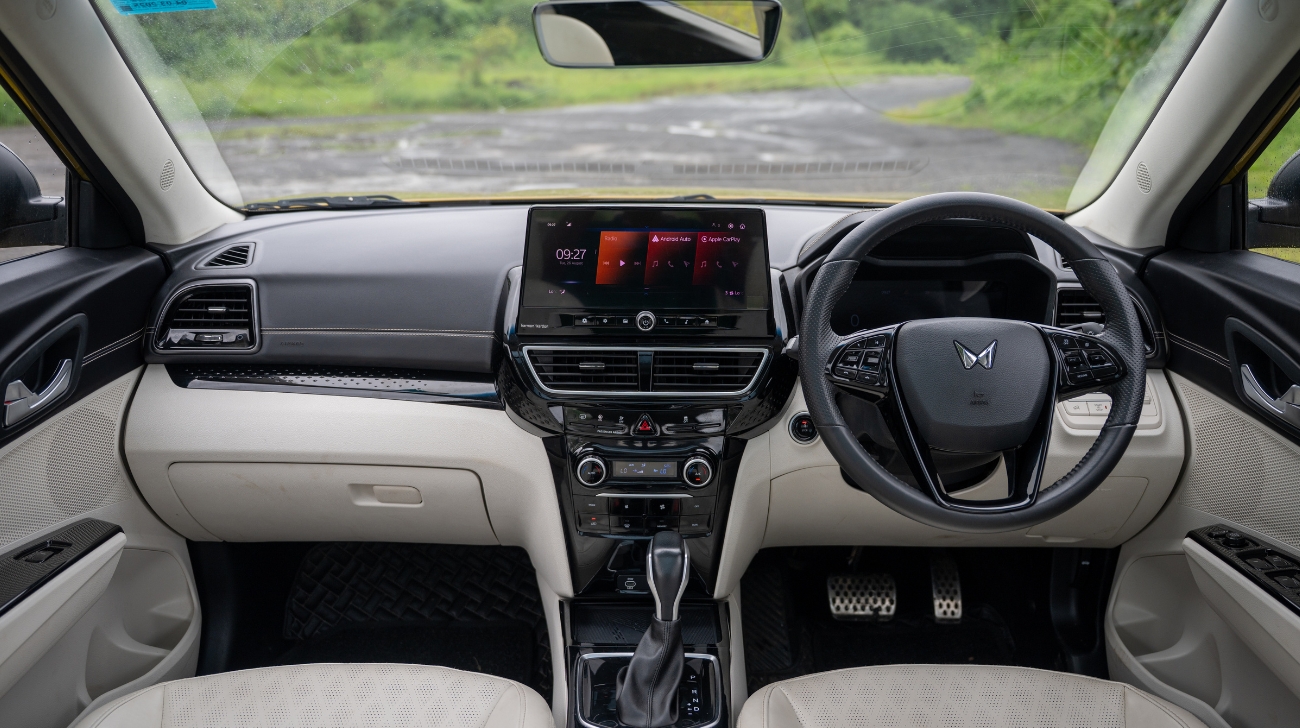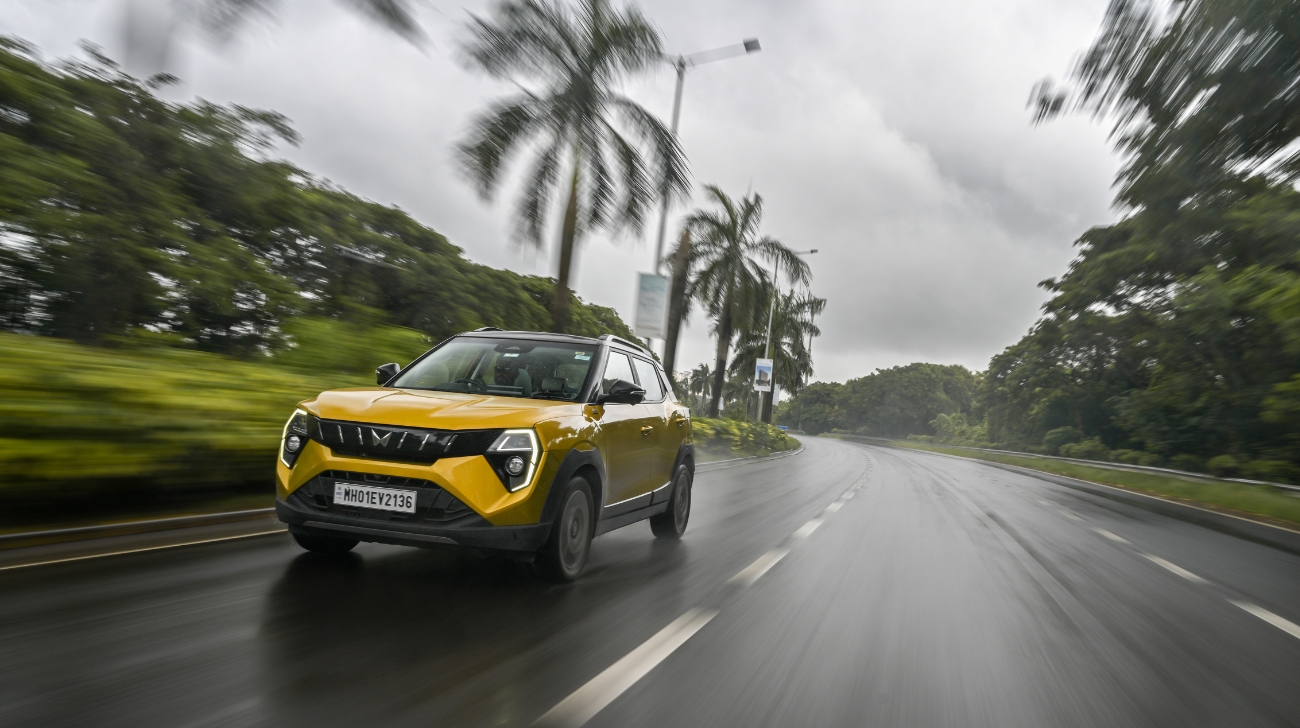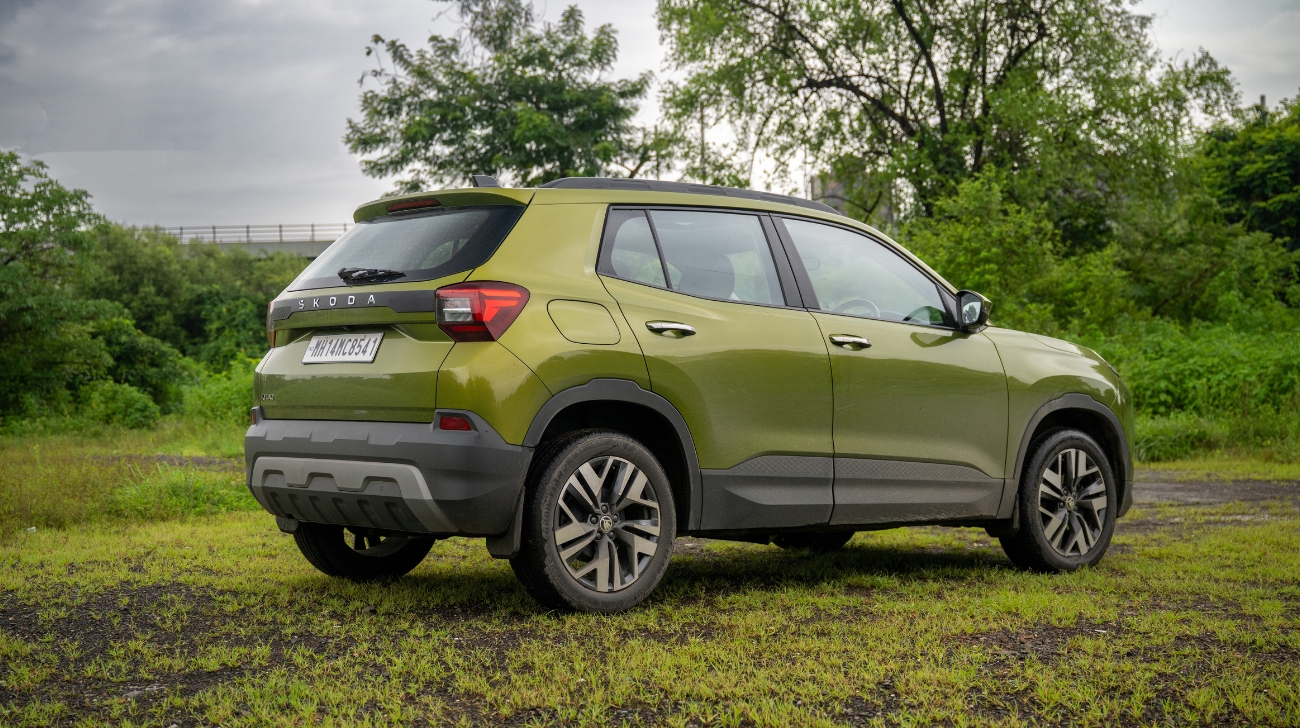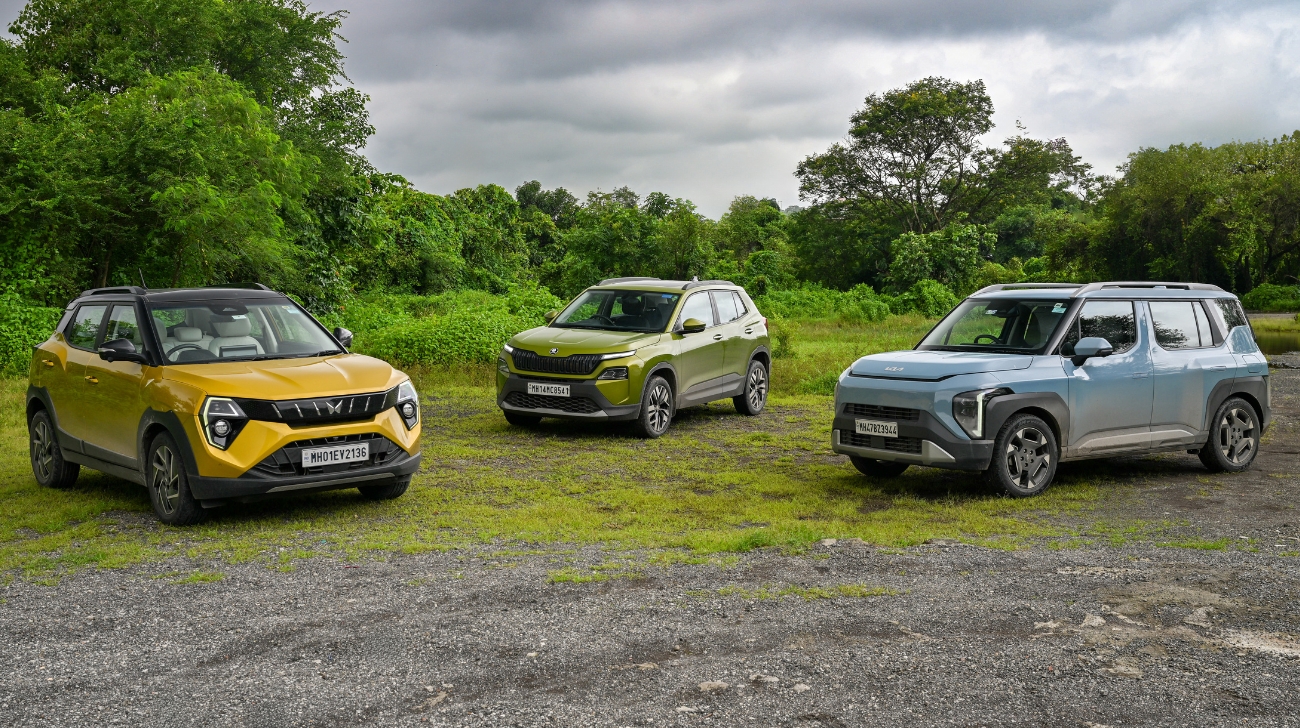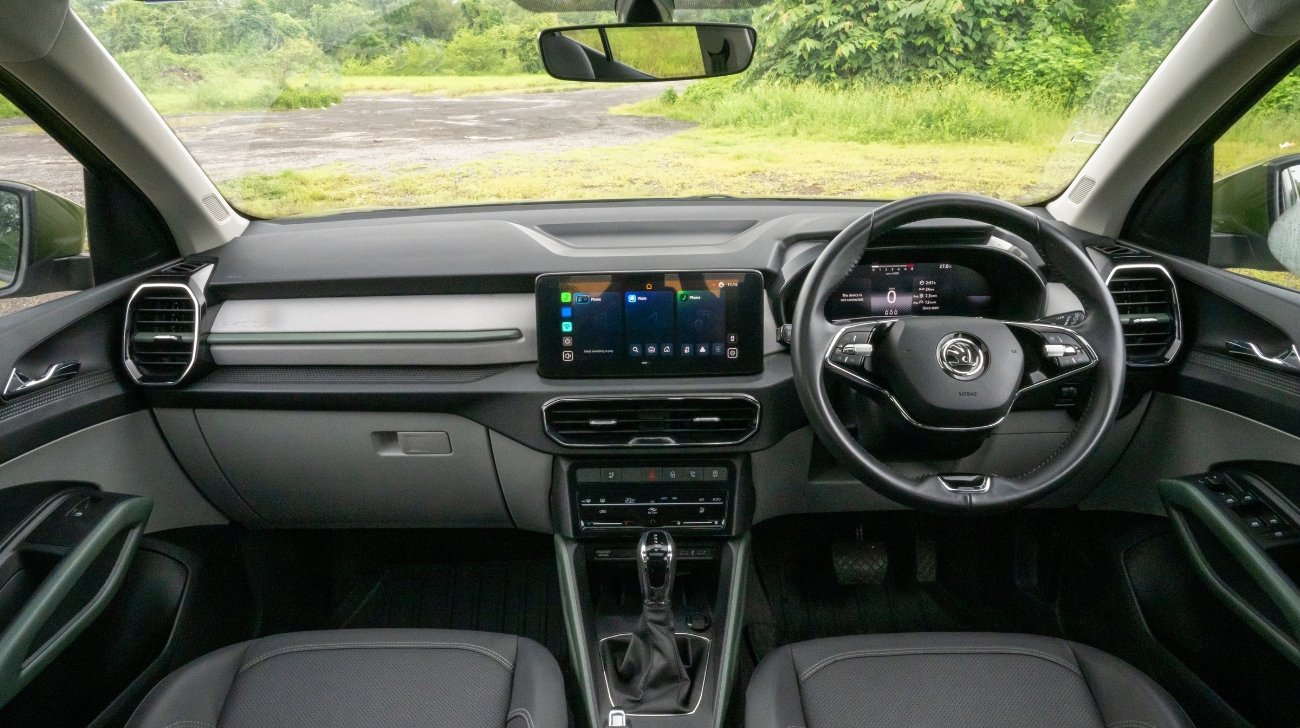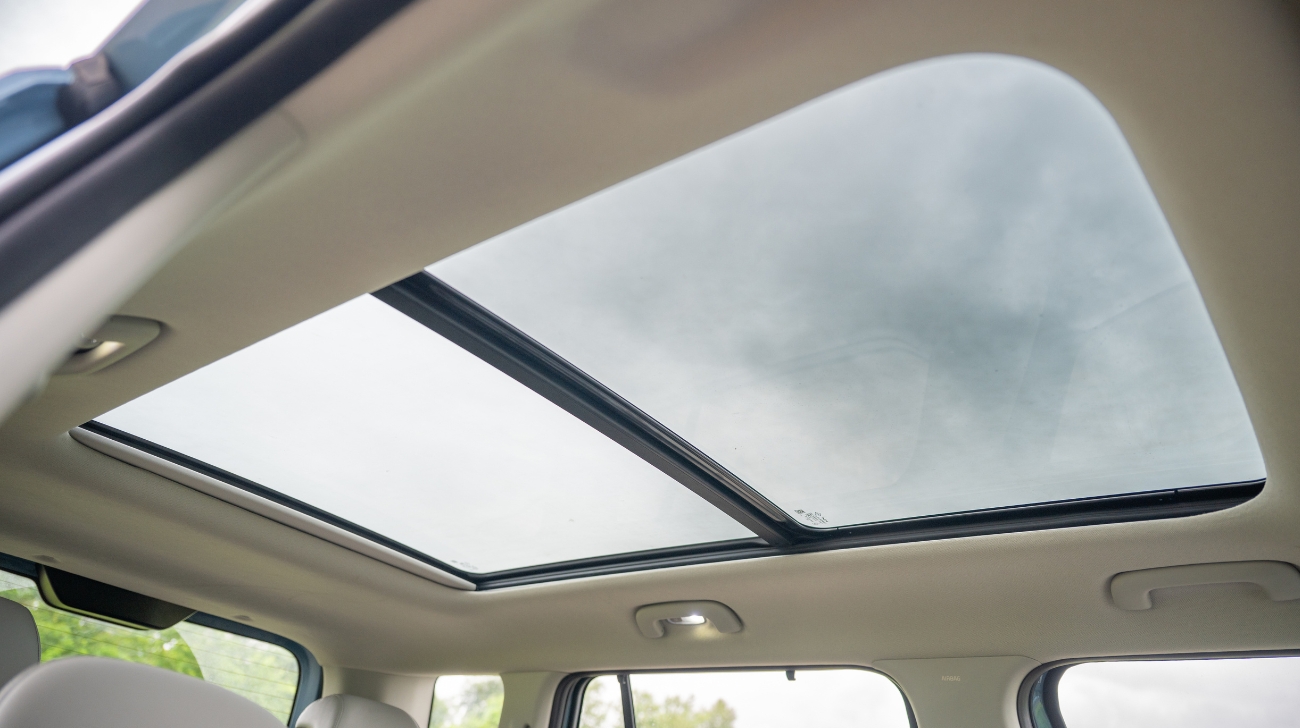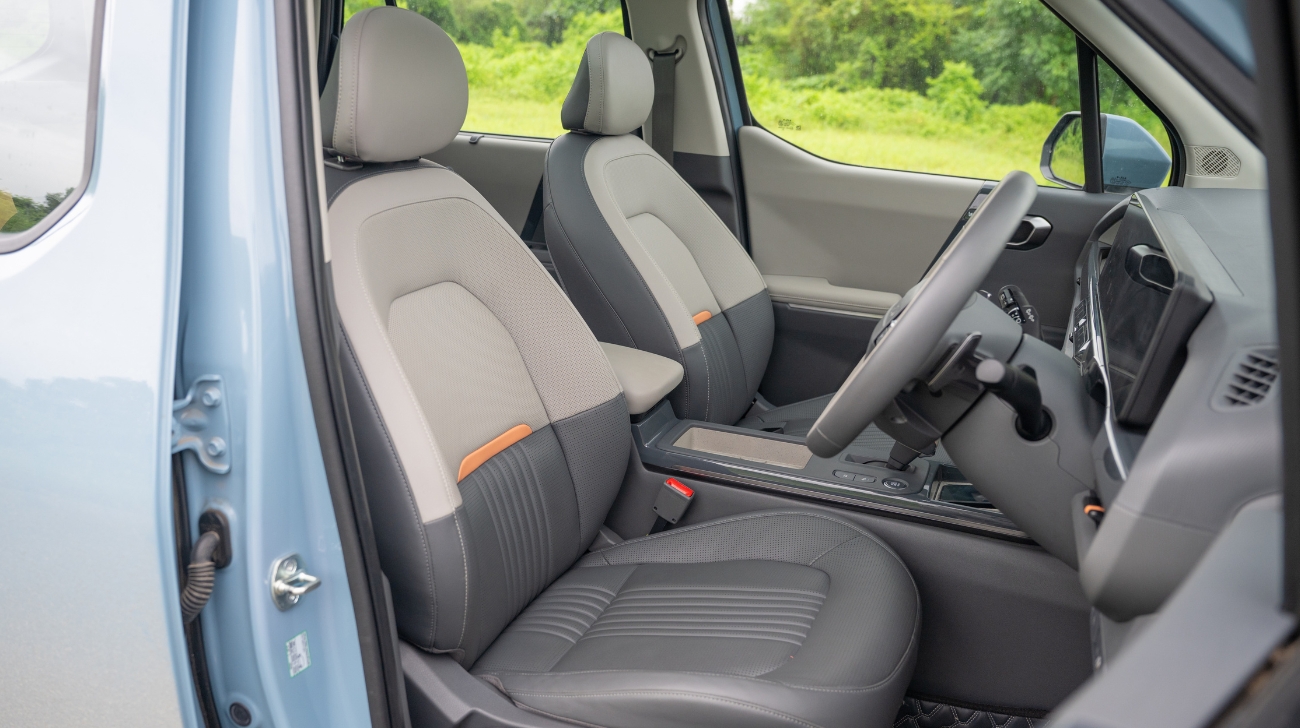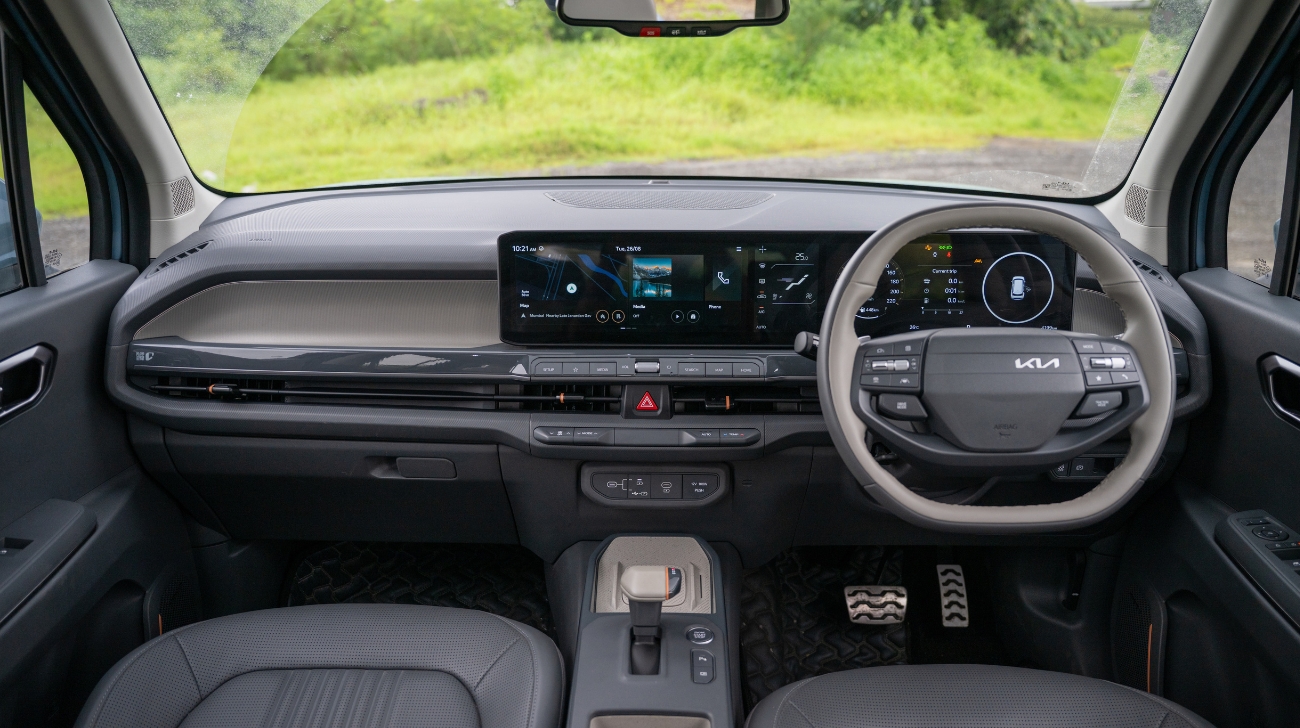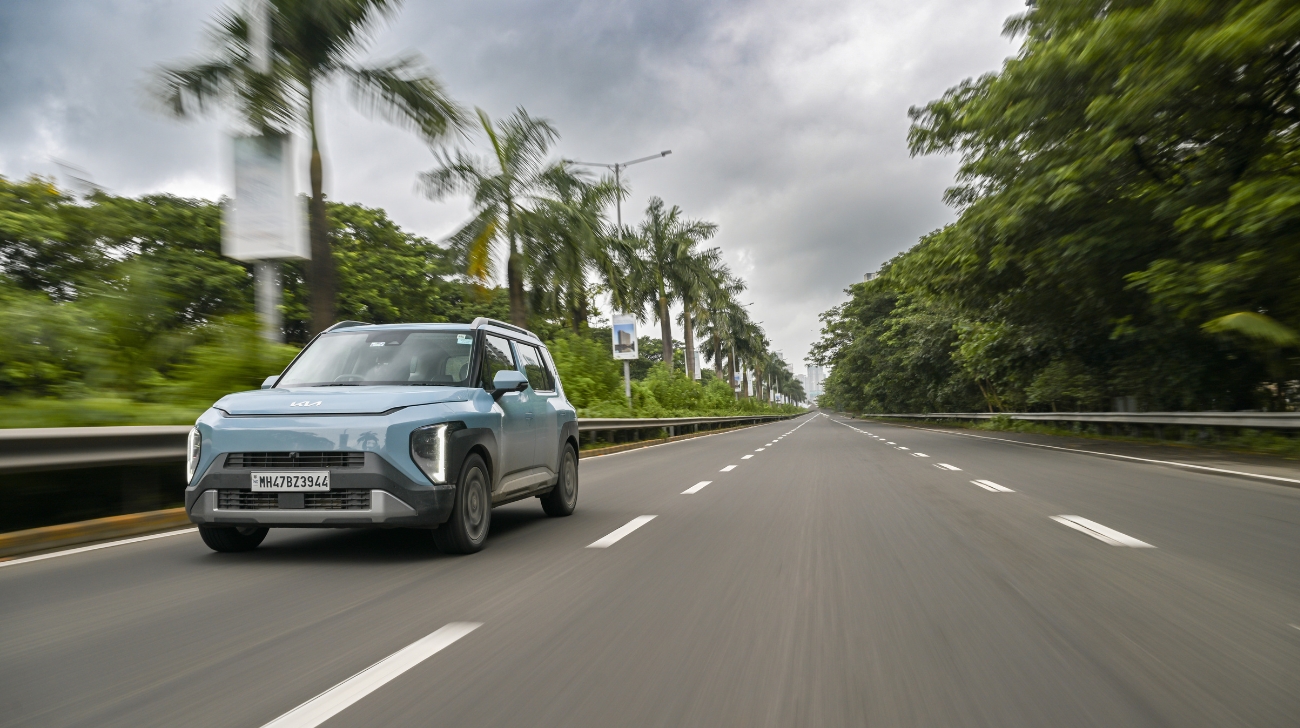There are moments in the Indian car market when the tectonic plates of consumer preference shift. This is one of them. Small SUVs are no longer the budget compromises they once were; they’ve become serious, desirable machines aimed at people who want the feel of an SUV in a package that still fits into our congested cities.
At the sharp end of this compact SUV world, we’ve lined up three contenders: the Mahindra XUV 3XO, Kia Syros, and Skoda Kylaq. Each has been designed to lure you with its own pitch. The Mahindra claims to offer class-leading performance and features at aggressive pricing. The Kia promises out-of-the-box design and ease of use, built around a turbocharged engine and dual-clutch gearbox. Skoda aims to bring European sophistication and a sense of solidity that no one else can quite match.
We’re only talking about the petrol automatics in their most loaded variants here: the Mahindra AX7 L with its 1.2-litre TGDi and 6-speed torque converter, the Kia Syros GTX+ with the 1.0-litre turbo and 7-speed DCT, and the Skoda Kylaq Style powered by the 1.0-litre TSI with a 6-speed automatic: three different cars, three different powertrains, and three different ways of interpreting the same formula.
Style vs Stature
You can’t talk about cars in India without acknowledging the importance of styling. Buyers don’t just want a good car; they want one that appears to belong to a higher segment than it actually does.
The Mahindra XUV 3XO is the brash one. Mahindra has taken the compact SUV silhouette and pumped it full of muscle. The grille is large, the headlamps are sharp, and the rear end, with its connected LED strip, feels premium. It doesn’t look like an upgrade of the old XUV300; it looks like a fresh idea as it gets a complete overhaul. It’s slightly taller and squatter than the others, and in gold or red, it has proper road presence. Park it in your housing society, and it’s going to look the most imposing of the three.
The Kia Syros takes a very different tack. It’s modern, sleek, and youthful, with design cues borrowed from Kia’s global design language. The ‘Star Map’ LED DRLs, angular face, and cleaner surfacing make it feel bold without being over-the-top. It’s the one that’s going to appeal to younger buyers who like the idea of something different without being aggressive. It looks tight, proportional, and well thought out, though some people will either love it or hate it. But it grows on you eventually.
And then there’s the Skoda Kylaq. Understated, squared-off, and clean in its restraint. The design doesn’t scream for attention; it quietly conveys that it’s European, well-built, and doesn’t rely on gimmicks. However, most are going to confuse it with its bigger sibling, the Kushaq. There’s a boxy stance, plain character lines, and a simple face with a split between the DRL and headlamps. The Kylaq looks mature, and in India, that sometimes gets mistaken for “boring.” But if you want a car that looks like it will outlast the latest design fad, this is it.
Verdict on styling? Mahindra wins for sheer presence, Kia for bold flair, and Skoda for old-school substance.
Where You Spend Your Time
Step into the Mahindra XUV 3XO AX7 L, and the first thing you notice is the screen. Actually, the two screens. The 10.25-inch digital cluster and 10.25-inch infotainment display dominate the dashboard, both crisp and easy to use. The design is pretty clean, and the materials are much better than Mahindra’s earlier efforts in this segment. The leatherette seats are comfortable, the steering feels good in the hand, and everything is logically placed. The longest wheelbase, coupled with the widest cabin, means rear space is generous by segment standards, and the panoramic sunroof adds to the airiness. The boot, at 364 litres, is the smallest of the three, though clever use of space makes it usable for day-to-day runs.
The Kia Syros GTX+ is, predictably, a tech-forward vehicle. The cabin is designed to look premium, with soft-touch elements in key areas and a focus on features. The twin-screen setup here merges the 10.25-inch infotainment with the digital driver’s display into one flowing panel, with an HVAC display panel integrated between the two. It looks futuristic, and for many buyers, that's a key consideration. The seats are supportive, though a touch firmer than Mahindra’s. Rear space is good, but not quite as generous as the 3XO. Where Kia scores high is with features such as electric seat adjustment, front and rear ventilation, and an air filter system. The rear bench can recline and has integrated sun shades for the windows. The boot, at 465 litres, is practical, and the ergonomics are well sorted. Kia also nails the little details, touchpoints feel well finished, and the overall sense of polish is higher than Mahindra’s.
The Skoda Kylaq Style doesn’t bother with massive screens. You get the smallest infotainment display of the three. The layout is simple, driver-focused, and intuitive. It doesn’t feel as high-tech as the Kia, nor as expansive as the Mahindra, but everything feels solid. The plastics are higher in quality, the switchgear feels tactile, and the seating position is sporty. The Kylaq’s cabin is the smallest out of the three and isn’t as opulent. Rear space is a bit tighter, but the boot, at 446 litres, is better shaped than Mahindra’s and more usable.
So, in the cabin stakes: Mahindra scores on sheer space and equipment, Kia on polish and presentation, and Skoda on build quality and driver ergonomics.
The Gadget Wars
The Mahindra XUV 3XO is throwing everything at the wall: Level 2 ADAS, panoramic sunroof, dual-zone climate control, a 7-speaker Harman Kardon audio system, and even a 360-degree camera. Wireless Android Auto and CarPlay are now available, along with connected-car features like integrated Amazon Alexa. It also features USB Type-A and Type-C ports, as well as a wireless charging pad. It’s now available along with a kit list for the money.
The Kia Syros GTX+ isn’t far behind. It comes equipped with its own Level 2 ADAS suite, ventilated seats, a panoramic sunroof, a wireless charger, and all the connected features you’d expect. It comes equipped with a Harman Kardon 8-speaker setup, a 360-degree camera, wireless Android Auto/Apple CarPlay, and an in-built air purifier. Kia’s system has slightly cleaner graphics and a slicker interface than Mahindra’s, though both work well. It gets features that even its bigger Kia siblings miss out on.
The Skoda Kylaq Style plays it differently. It doesn’t have ADAS, but it does have ventilated seats. What it does offer is wireless CarPlay and Android Auto, wireless charging, and the sense that everything works exactly as it should. It lacks a branded audio system and is the only one of the three without an electronic handbrake. There’s no hiding it: on sheer equipment count, it loses badly to the Indian and the Korean, and that is surprising for a European.
So if features matter most, it’s Kia first, Mahindra a close second, and Skoda a distant third.
How They Actually Drive
The Mahindra XUV 3XO AX7 L is equipped with a 1.2-litre turbocharged petrol engine producing 128 bhp and 230 Nm, paired with a 6-speed torque converter automatic transmission. It’s the most powerful engine here, and you feel it straight away. There’s a strong surge from low down, and the gearbox, while not the fastest, is smooth and predictable. In the city, it feels relaxed, rarely hunting for gears. On the highway, it has the torque to make overtakes easy, and the engine itself feels unstressed even at triple-digit speeds. It’s easily the most fun to drive of the three in terms of outright pace.
The Kia Syros GTX+ is equipped with a 1.0-litre turbocharged petrol engine producing 118 bhp and 172 Nm, paired with a 7-speed dual-clutch gearbox. On paper, it is less powerful compared to the Mahindra, but it is equipped with a DCT and turbocharged engine. It does not feel as engaging to drive. In the city, it’s snappy and responsive, though you do notice a slight hesitation when crawling in traffic. On the open road, it builds speed cleanly, though it never feels as muscular as the Mahindra. The gearbox shifts quickly when you’re pressing on, which gives it a sportier character. Kia also has the best NVH levels of the three SUVs.
The Skoda Kylaq Style is equipped with a 1.0-litre TSI turbocharged petrol engine producing 114 bhp and 178 Nm, paired with a 6-speed automatic transmission. Skoda’s engine is smooth, refined, and happy to rev, but the gearbox is more relaxed than Kia’s DCT. It doesn’t rush; it simply proceeds with calm efficiency. Performance is adequate, though not as exciting as the 3XO. It’s smooth and refined, but Skoda doesn’t offer a diesel option at all, unlike Mahindra and Kia. So if long-distance efficiency is your priority, the Kylaq will be the least flexible choice.
So, for outright performance and torque: Mahindra. For urban polish: Kia. For refinement: Skoda.
On Indian Roads
The Mahindra XUV 3XO has always been renowned for its excellent ride quality, and this new version further enhances that reputation. The suspension is firm enough to keep the car composed, but soft enough to absorb the worst of Indian potholes. On the highway, it feels stable and planted, although there is a slight touch of body roll when pushed into corners. The steering is light in the city and heavier on the highway, providing you with enough confidence. The three drive modes, Zip, Zap, and Zoom, also make a difference. For Indian roads, it’s a very good balance.
The Kia Syros is the least sporty handler. The suspension is firmer, the steering sharper, and body control tighter. But on a winding road, it turns in eagerly, but the tall body reminds you it’s still a compact SUV. The trade-off is due to a higher centre of gravity. At low speeds, it feels firm, although the damping is well done. If you live in a city with poor roads, you’ll notice it more than with the Mahindra or Skoda.
The Skoda Kylaq is the most European in feel. The suspension is beautifully damped, absorbing rough roads without fuss while maintaining the car's stability at high speeds. The steering is precise, and the overall balance is excellent. Drive it hard and you realise it has immense composure. It feels like the most mature of the three, less exciting than the Mahindra, less torquey, but the best all-rounder for comfort and control.
Practicality and Day-to-Day Impressions
Owning a car in India is about more than specs and handling; it’s about living with them daily.
The Mahindra XUV 3XO gives you space, features, and performance. It’s easy to drive in traffic thanks to light steering and smooth gearbox calibration. Fuel economy isn’t stellar. Expect 10–12 kmpl in the city and 14–15 kmpl on the highway. But for what it offers, it feels like a bargain. The only catch is Mahindra’s after-sales record, which remains patchy in some regions.
The Kia Syros feels like the most user-friendly and luxurious of the lot. It’s compact, easy to manoeuvre, and the DCT, despite some low-speed hesitation, makes driving in traffic relatively effortless. Fuel economy is slightly better than Mahindra’s, around 12–13 kmpl in the city and 16 on the highway. Kia’s aftersales is generally reliable, and ownership costs are predictable.
The Skoda Kylaq is the outlier. It feels solid and dependable, and you get the sense it’ll outlast the others. But Skoda’s aftersales reputation in India isn’t the strongest, and fuel economy is similar to Mahindra’s. Where it scores is in refinement and comfort over long distances; it is the one you’d pick for a Mumbai-Goa run without hesitation.
Which One Should You Buy?
So, which of these compact petrol automatics deserves your money?
If you want the most powerful option with a decent set of features for the money, the Mahindra XUV 3XO AX7 L is hard to beat. It’s quick, loaded with kit, spacious, and genuinely feels like a segment-up offering.
If you're looking for a vehicle that's youthful, stylish, and packed with loads of technology and features, the Kia Syros GTX+ delivers. The DCT gearbox is slick, the design is bold, and the list of features is strong. The trade-off is a firmer ride.
The Skoda appeals with solidity and refinement, but unlike the Mahindra and Kia, there’s no diesel alternative, which might matter to high-mileage buyers. It doesn’t have the gadgets or outright performance, but it feels the most grown-up.
And that’s the truth: Each represents a different flavour of compact SUV. The Mahindra appeals to your head and wallet, the Kia to your heart and sense of style, and the Skoda to your desire for a car that simply feels right, even if the brochure doesn’t make a song and dance about it.

